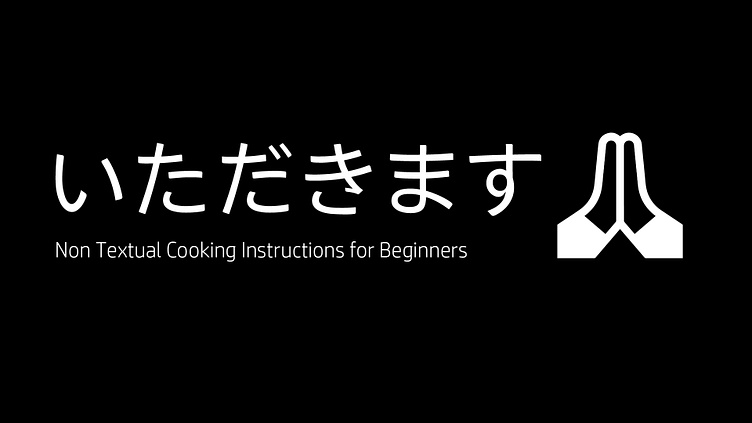Itadakimasu: Non Textual Cooking Instructions
Objective:
The project creates a set of non-textual-based cooking instructions using pictograms to make recipes more accessible to a broader audience, including individuals facing language barriers, reading difficulties, or unfamiliarity with written cooking instructions. By utilizing universally understood visual representations, the project seeks to empower beginners and diverse users to successfully follow cooking instructions without relying on text.
Design:
The design focuses on creating clear, simple, and intuitive non-text-based instructions and process explanations. The instructions are designed to be universally comprehensible, ensuring that users from diverse cultural backgrounds can understand and execute the recipes. Pictograms are utilized to achieve this. Text is used limitedly for annotations such as ml, g, time, or how many times steps have to be done.
The clear, culturally neutral pictograms enable users to follow recipes confidently and successfully, regardless of language proficiency or literacy levels. The cohesive design, grounded in simplicity and clarity, ensures a seamless and enjoyable user experience, making cooking more inclusive and approachable for everyone.
Design Considerations:
Clarity and Simplicity:
The instructions are designed to be as clear as possible, ensuring users can easily follow each step without confusion.
Universal Accessibility:
The design prioritizes accessibility, aiming to reach a wider audience, including those with language barriers, visual impairments, or limited reading skills.
Logical Sequence:
Steps and processes are designed in a logical sequence that represents the chronological order of the cooking process. This includes clear visual cues for the preparation, cooking, and final stages, allowing users to follow the steps from start to finish without confusion.
Contextual Understanding:
The cookbook provides the necessary context for each step, including the type of cooking method (e.g., frying, boiling), required utensils (e.g., knife, pan), and ingredient measurements. Values such as time (minutes), measurements (ml, g), and temperatures (°C) use universally recognized Latin numerals to ensure clarity.
Key Design Elements:
Pictograms:
The pictograms are the core of this project, crafted to be culturally neutral, easily recognizable, and universally comprehensible. These visual symbols convey essential information, aligning with the project's design objectives. They encompass various categories, including food, ingredients, tools, and other key elements.
Black and White Color Scheme:
The design utilizes a black-and-white color scheme to maintain a clean, simple, and easily recognizable aesthetic. This minimalist approach ensures that the focus remains on the clarity and functionality of the instructions, free from color distractions.
Typeface:
A neutral typeface is used for additional annotations, complementing the pictograms and supporting the overall clarity of the instructions.








